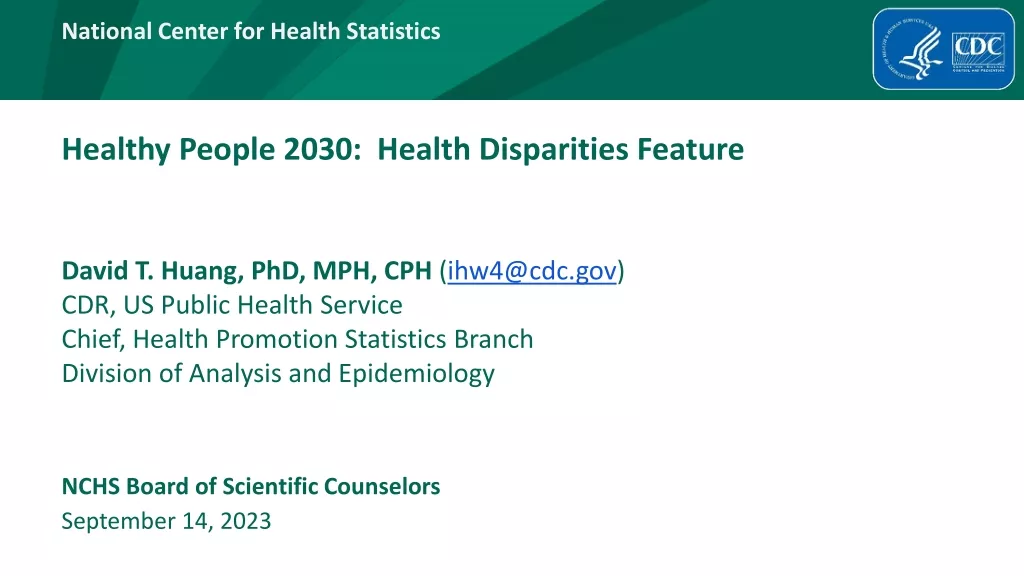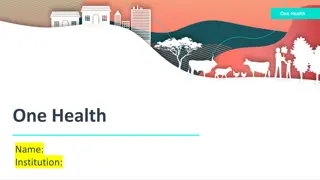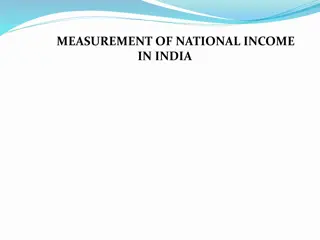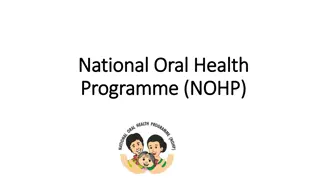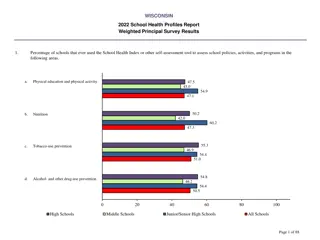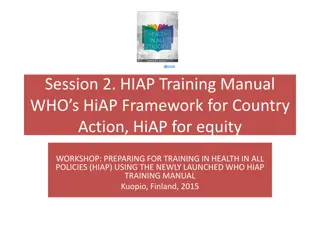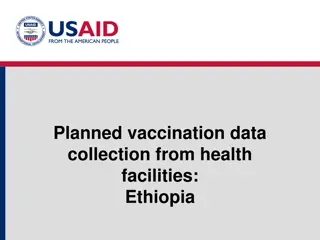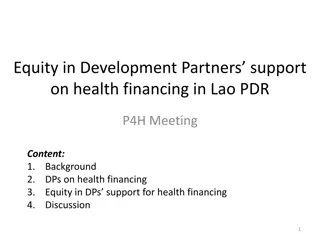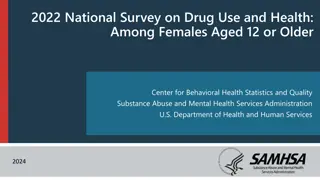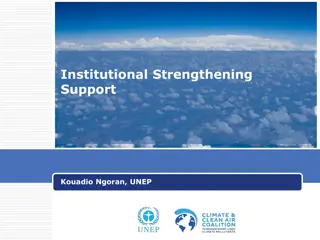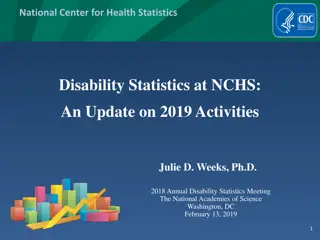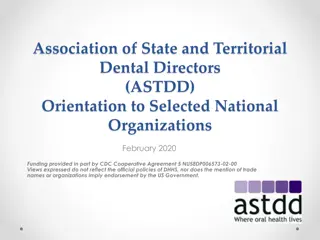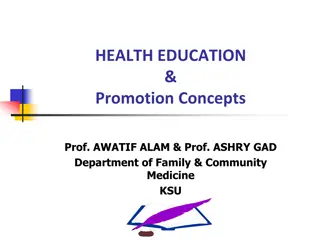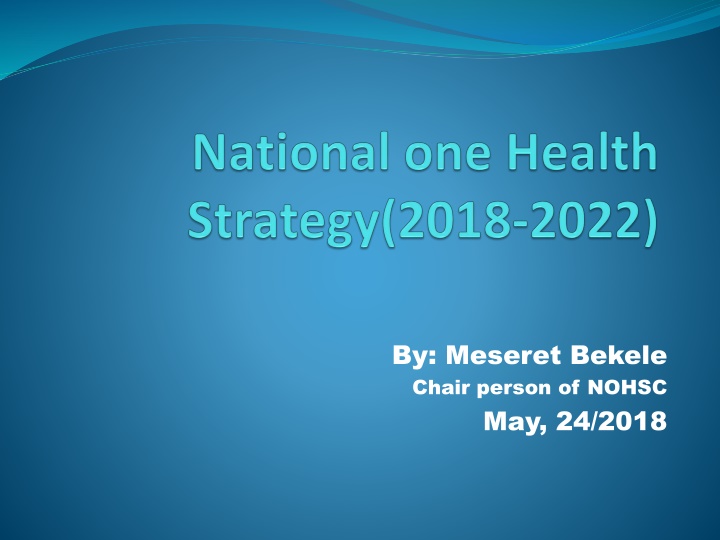
Advancing One Health Approach for Optimal Health Collaboration
Explore the strategic plan developed by the National One Health Steering Committee to enhance collaboration among human, animal, and environmental sectors for optimal health outcomes. Learn about the key pillars, management approaches, and cross-sectoral efforts to address zoonotic diseases and health threats using an innovative One Health strategy.
Download Presentation

Please find below an Image/Link to download the presentation.
The content on the website is provided AS IS for your information and personal use only. It may not be sold, licensed, or shared on other websites without obtaining consent from the author. If you encounter any issues during the download, it is possible that the publisher has removed the file from their server.
You are allowed to download the files provided on this website for personal or commercial use, subject to the condition that they are used lawfully. All files are the property of their respective owners.
The content on the website is provided AS IS for your information and personal use only. It may not be sold, licensed, or shared on other websites without obtaining consent from the author.
E N D
Presentation Transcript
By: Meseret Bekele Chair person of NOHSC May, 24/2018
Contents Introduction Situational analysis Strategic Approach Vision and Mission Statements Values Key Pillars and Strategic Objectives Management And Funding Monitoring And Evaluation Of The Strategic Plan Five Year Targets And Implementation Plan
Introduction The One Health (OH) approach is known to be the mechanism that enhances collaboration among the human, animal and environment sectors to deliver optimal health for humans, animals and the environment. The country has made huge steps to strengthen the animal and human health services both in manpower and facilities, cross-sectoral efforts to prevent, detect and respond to OH threats are still at juvenile stage. Cross-sectoral collaborations have been limited in their lifespan and specific in their scope and are disbanded once the threat is contained or reduced.
National One Health Steering Committee (NOHSC) established in August 2016. The committee is comprised : Ministry of Health (MOH) , Ministry of Livestock and Fisheries (MoLF),=>MoALR Ministry of Culture and Tourism (MCT)/Ethiopian Wild life conservation Authority and Ministry of Environment, Forest and Climate Change (MoEFCC). The NOHSC is mandated to facilitate multi-sectoral coordination and collaboration among OH stakeholders at National and sub national levels and strive towards the establishment of a sustainable institutionalized OH platform in the country.
CONT. TWGs are envisaged to provide expert forums for tackling zoonotic diseases, enhance mutual accountability and collaboration among the sectors and promote greater efficiencies in the management of zoonotic diseases and other health threats using OH approach in the country. (RTWG,ATWG,EPTTWG,OHCNTWG ) To collaboration and reduce the risks of health threats at the animal-environment-human interface in the country, OHSC have come together to design One Health strategic plan (2018-2022). MOU Prevention and control strategy plan for Rabies and Anthrax Preparedness and Response plan HPAI and RVF accelerate the multi-sectoral coordination and
CONT. As part of the development of this strategic plan, stakeholders assessed weaknesses, including within the existing strengths and The national platform and multi-stakeholder engagement, Funding sources and resource mobilization, Disease surveillance, laboratory, food safety, and information exchange.... opportunities and threats in the external environment, including legislative, socio-economic, technological and environmental dimensions. Bio-safety bio-security, communications and
Strategic Approach Vision and Mission Statements Vision Ethiopia with negligible risks and impacts of endemic, emerging and re-emerging health threats at the animal- environment-human interface. Mission To mechanism at all levels for multi- disciplinary and multi- sectoral engagement in the prevention, detection and response to endemic, emerging and re-emerging health threats at the human, animal and environment interface. establish sustainable one health coordination
.CONT. Values Adaptability Collaboration Accountability: Sustainability: Safeguard the Environment: Leadership Excellence: Integrity: Transparency: Equality & Inclusion Sense of Urgency:
Key Pillars and Strategic Objectives Key Pillars The NOH Strategic Plan has identified the following areas as key pillars. 1. Coordination and Collaboration 2. Preparedness and Response 3. Surveillance and Reporting 4. Policy, Advocacy and Communication 5.Research and Capacity Building Strategic Objectives To achieve our vision, these strategic objectives offer vital contributions.
CONT. 1. Coordination and Collaboration Objective 1.1. To ensure effective and functional One Health coordination mechanism at all levels by 2022 Objective 1.2: To mainstream One Health activities in all relevant government sectors by 2020 Objective 1.3: Develop and implement monitoring and evaluation system for OH at national and sub-national levels
CONT. 2. Preparedness and Response Objective 2.1: Establish and strengthen multi-sectoral and multidisciplinary capacities at all levels for timely detection, and rapid response to emerging and re-emerging priority threats at the human-animal- environment interface by 2021 Objective 2.2: Develop multi-sectoral prevention and control strategies for priority emerging and re-emerging zoonotic diseases Objective 2.3: Implement and promote multi-sectoral prevention and control strategies and preparedness and response plans for priority emerging and re-emerging zoonotic diseases using One Health approach
CONT. 3. Surveillance and Reporting Objective 3.1: Establish and strengthen integrated multi-sectoral surveillance systems by 2022 Objective 3.2: Operationalize regular sharing and use of surveillance data and information across sectors by the year 2020
CONT. 4. Policy, Advocacy and Communication Objective 4.1: Improve enabling policy environment across all collaborating sectors for the implementation of one health by year 2022 Objective 4.2: Secure high-level buy-in and support for one health across all sectors Objective 4.3: Improve knowledge, attitude, behavior and practice of community on health threats or risks at human, animal, and environment interface
.CONT. 5. Research and Capacity Building Objective 5.1: Conduct joint research projects on prioritized zoonotic diseases and other health threats at the animal-human-environment interface by 2020 Objective 5.2: Improve policy on disease prevention, detection and response using one health in line with research findings by 2022 Objective 5.3: Improve human resource and infrastructure capacity for health research by 2022

